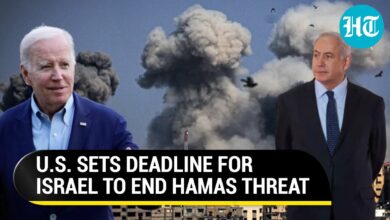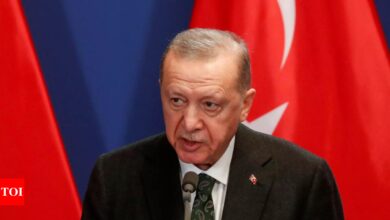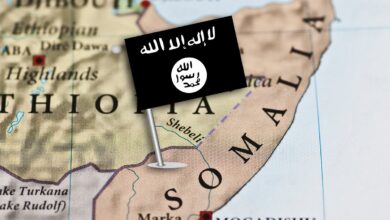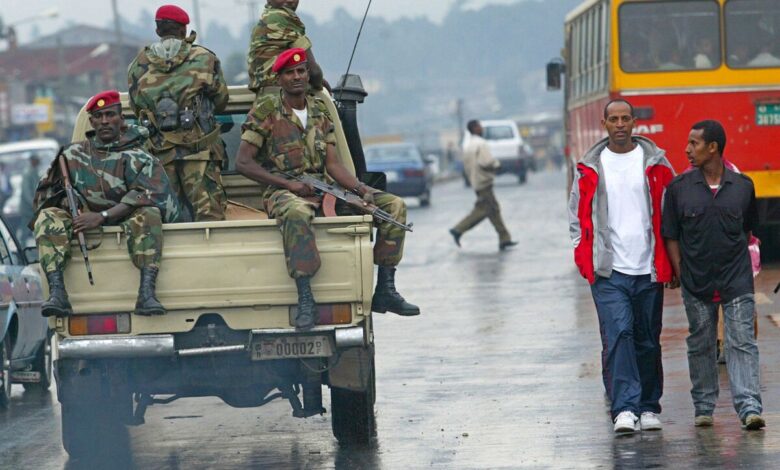
Somalia Ethiopia Al Shabab Conflict A Deep Dive
Somalia Ethiopia Al Shabab conflict has plagued the region for years, deeply impacting the lives of countless people. This complex issue involves interwoven historical tensions, political maneuvering, and the relentless actions of Al-Shabab. Understanding the roots of this conflict, the strategies employed by Al-Shabab, and the international responses is crucial for comprehending the multifaceted nature of the crisis.
From historical grievances to the humanitarian crisis, this conflict has left a trail of devastation. The conflict’s impact stretches beyond Somalia and Ethiopia, affecting neighboring countries and creating a regional security challenge. Examining the various facets of this conflict is essential to understanding the path forward.
Historical Context
The conflict between Somalia and Ethiopia, intertwined with the rise and actions of Al-Shabab, has deep historical roots. Tensions stem from a complex interplay of territorial disputes, ethnic rivalries, and competing geopolitical interests. This historical backdrop significantly influences the current dynamics of the conflict, shaping the motivations and strategies of the involved parties.The longstanding border disputes and historical grievances between the two nations have fueled cycles of violence and instability.
These underlying tensions provide fertile ground for extremist groups like Al-Shabab to exploit and amplify the existing conflicts.
Historical Roots of Somali-Ethiopian Tensions
The historical relationship between Somalia and Ethiopia has been marked by periods of cooperation and conflict. The two nations share a long history of territorial disputes, particularly over the Ogaden region, a territory inhabited by Somali people but part of Ethiopia. This area has been a focal point of conflict, contributing to the complex dynamics of the region. Past conflicts and unresolved issues have contributed significantly to the ongoing tensions.
Evolution of Al-Shabab’s Involvement
Al-Shabab, an extremist Islamist group, emerged from the instability and conflict in Somalia. Initially focused on overthrowing the Somali government, the group’s activities have expanded beyond Somalia’s borders, impacting neighboring countries like Ethiopia. The group’s motivations are multifaceted, ranging from religious extremism to territorial ambitions and the desire to establish a strict Islamic state.
Significant Historical Events
The history of conflict in this region is punctuated by numerous significant events that have shaped the current conflict. These events include:
- The 1977-78 Ogaden War: This conflict saw Ethiopia and Somalia clash over the Ogaden region, resulting in significant loss of life and displacement. The war highlighted the long-standing territorial disputes between the two nations and the complex ethnic dynamics of the region.
- The rise of Al-Shabab: The group’s emergence in the early 2000s marked a turning point, bringing a new dimension to the conflict. Al-Shabab’s ideology and actions have significantly impacted the region’s security and stability.
- The 2006 Ethiopian intervention in Somalia: Ethiopia’s military intervention in Somalia, aiming to combat Al-Shabab, complicated the existing conflict. The intervention sparked controversy and further escalated tensions in the region.
Key Figures and Groups
Several key figures and groups have played significant roles in the conflict.
- Mohamed Siad Barre: Former Somali President, his regime’s policies and actions played a role in the ongoing tensions between Somalia and Ethiopia.
- Al-Shabab leadership: The group’s leadership has been instrumental in directing the group’s activities and mobilizing support. Their ideologies and strategies have shaped the course of the conflict.
- Ethiopian government officials: Government officials have been directly involved in the military response to Al-Shabab and in negotiating with various factions.
Timeline of Significant Events
A detailed timeline of key events provides context and illustrates the progression of the conflict.
| Date | Location | Event |
|---|---|---|
| 1977 | Ogaden region | Ogaden War begins |
| 2006 | Somalia | Ethiopian intervention in Somalia |
| 2011 | Various locations | Al-Shabab attacks increase |
| 2015 | Various locations | Continued clashes and counter-insurgency operations |
Nature of the Conflict
The conflict between Somalia and Ethiopia, exacerbated by the presence of Al-Shabaab, is a multifaceted struggle with deep-rooted political, social, and economic dimensions. This complex interplay of factors fuels the violence and makes achieving a lasting peace incredibly challenging. The conflict’s nature extends beyond simple border disputes, encompassing issues of power, resources, and competing ideologies.The conflict’s intricate nature necessitates a careful examination of the various actors involved, their motivations, and the specific strategies employed.
The ongoing conflict between Somalia, Ethiopia, and Al Shabab is a complex issue with deep roots. It’s a struggle with serious humanitarian consequences, and unfortunately, these types of conflicts often lead to instability. Interestingly, the recent tragic incident involving the armorer Alec Baldwin and the “Rust” shooting highlights a different kind of danger, though one that could indirectly affect the region’s security.
The incident raises questions about safety protocols in the film industry, armorer Alec Baldwin rust shooting , and how such tragedies can be avoided in the future. Ultimately, the Somalia-Ethiopia-Al Shabab conflict remains a major concern requiring continued international attention.
Understanding the diverse forms of violence employed is crucial to comprehending the devastating impact on the civilian population. Regional and international actors play significant roles, influencing the course of the conflict through interventions and aid efforts.
Political Dimensions
The political landscape of the Horn of Africa is characterized by complex power dynamics, historical rivalries, and competing claims to resources and influence. The conflict often involves struggles for control of territory and resources, as well as the assertion of political legitimacy. Al-Shabaab’s rise to prominence is deeply rooted in the political instability and power vacuums that have plagued Somalia.
Social Dimensions
The social fabric of the region is often fractured by ethnic tensions, religious differences, and historical grievances. These social divisions create fertile ground for conflict and make reconciliation extremely difficult. Furthermore, the presence of extremist groups like Al-Shabaab has further complicated the social landscape, often exploiting existing tensions for their own purposes.
Economic Dimensions
The struggle for resources, such as land and water, is a significant driver of the conflict. Competition for economic opportunities and control of trade routes further exacerbates the existing tensions. Al-Shabaab’s control over territory allows them to levy taxes and extort resources, further hindering the economic development of the region.
The ongoing conflict between Somalia, Ethiopia, and Al-Shabab is a complex issue with deep roots. It’s a struggle with real-world consequences, unlike, say, the fantastical world of Sweeney Todd, though the captivating musicality of broadway cast albums sweeney todd might offer a temporary escape from the harsh realities of war. Ultimately, though, the situation in Somalia and Ethiopia remains a pressing issue needing attention.
Approaches of Actors Involved
Different actors employ varying strategies and tactics. The Somali government, for instance, often utilizes a combination of military operations and political negotiations, while Al-Shabaab relies on insurgency tactics and terrorist acts. Neighboring countries like Ethiopia may employ a more cautious approach, prioritizing regional stability.
Types of Violence Employed
The conflict involves a range of violent tactics. These range from conventional military operations to asymmetric warfare, such as ambushes, bombings, and targeted assassinations. The use of suicide bombings and other terrorist tactics is a defining feature of Al-Shabaab’s approach.
Role of Regional and International Actors
Regional organizations, such as the IGAD, and international bodies, like the UN, play a vital role in mediating the conflict and providing humanitarian aid. Their involvement, however, is often hampered by political disagreements and resource limitations. For example, the involvement of countries like Kenya and Uganda in military operations in Somalia demonstrates the regional dimension of the conflict.
Impact on Civilian Population
The conflict’s devastating consequences are borne by the civilian population. Millions have been displaced from their homes, and countless lives have been lost due to violence and lack of access to essential resources. The conflict has also had a profound impact on the region’s overall development, hindering progress in education, healthcare, and infrastructure. The impact on children and women is particularly severe, often leading to long-term trauma and societal disruption.
Regional Implications
The conflict between Somalia and Ethiopia, exacerbated by the presence of Al-Shabaab, has profound ripple effects throughout the wider region. Neighboring countries, particularly Kenya and Djibouti, face heightened security threats, humanitarian crises, and economic instability. Understanding these implications is crucial to appreciating the multifaceted nature of this protracted conflict and the urgent need for regional cooperation in addressing its root causes.The conflict’s ramifications extend beyond the immediate borders of Somalia and Ethiopia, affecting the stability and well-being of neighboring nations.
The porous nature of borders, combined with shared resources and historical ties, means that the consequences are not confined to a single nation.
Impact on Neighboring Countries
The presence of Al-Shabaab, and the broader conflict, has created instability that spills over into neighboring countries. Kenya, in particular, has experienced heightened security concerns due to the movement of militants and the potential for attacks. Djibouti, a strategic location with a significant military presence, also faces heightened security risks and a potential for the conflict to disrupt regional trade routes and economic activity.
The ongoing conflict between Somalia, Ethiopia, and Al Shabab is a complex issue with deep roots. It’s definitely a tough situation, and the ripple effects are felt far and wide. Meanwhile, the housing market near NYC is experiencing some interesting shifts, with prices fluctuating dramatically in some areas. This dynamic market is definitely worth checking out if you’re looking for a new home or just keeping an eye on trends.
housing market near nyc Ultimately, the instability in the region continues to impact countless lives, creating a complicated picture for the future.
Humanitarian Crisis Summary
The conflict has triggered a severe humanitarian crisis, with millions displaced and facing severe food shortages and disease outbreaks. The combination of conflict, drought, and economic hardship has created a dire situation, requiring substantial international assistance. The crisis underscores the need for coordinated humanitarian efforts to address the immediate needs of affected populations.
Economic Consequences
The conflict significantly impacts regional economies. Disrupted trade routes, reduced agricultural production, and the outflow of refugees all contribute to economic losses. For instance, the disruption of agricultural output in Somalia and the movement of refugees to neighboring countries place a strain on resources and infrastructure. The humanitarian cost and the economic consequences are closely intertwined, highlighting the need for economic stabilization alongside humanitarian aid.
Security Implications
The conflict poses significant security implications for the broader region. The presence of extremist groups like Al-Shabaab raises concerns about the potential for the spread of terrorism and the destabilization of neighboring countries. The conflict also undermines efforts to promote regional peace and security.
Impact on Different Sectors
| Sector | Impact | Examples | Mitigation Strategies |
|---|---|---|---|
| Agriculture | Reduced crop yields, livestock losses, and disruption of farming activities due to conflict and drought. | Farmers abandoning their land, reduced access to markets, destruction of irrigation systems. | Provision of drought-resistant seeds, agricultural tools, and access to markets. Support for agricultural cooperatives and early warning systems for drought. |
| Health | Limited access to healthcare services, outbreaks of diseases, and increased malnutrition. | Shortage of medical supplies, staff, and facilities. Malnutrition among children and pregnant women. | Deployment of mobile clinics, provision of medical supplies, training of local healthcare workers, and improved sanitation. |
| Education | Closure of schools, displacement of students, and disruption of learning. | Children unable to attend school, loss of teachers and educational resources. | Establishment of temporary learning centers, provision of educational materials, and support for teachers. |
| Water | Scarcity of clean water, contamination of water sources. | Increased waterborne diseases, limited access to safe drinking water. | Construction of water wells and purification systems, improving sanitation infrastructure, and promoting water conservation practices. |
Al-Shabab’s Tactics and Strategies
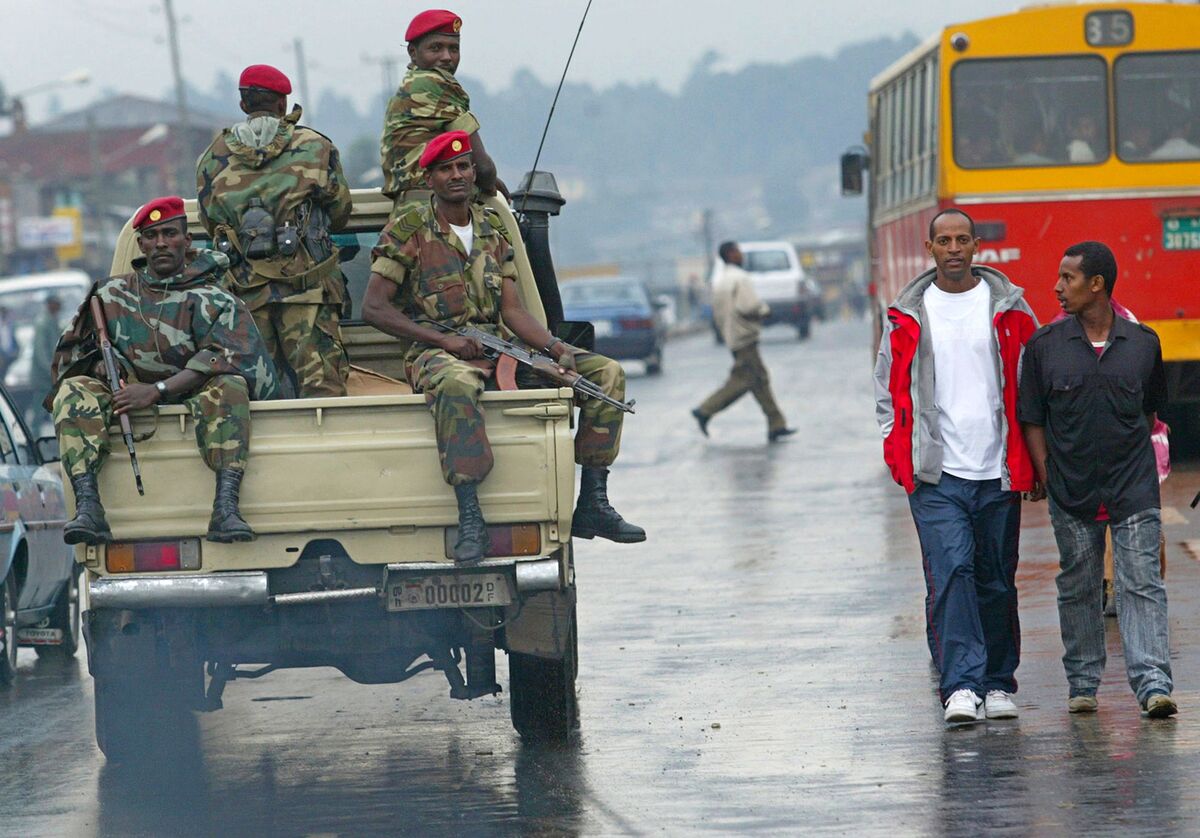
Al-Shabab, an extremist Islamist group operating primarily in Somalia, employs a multifaceted approach to warfare and governance. Their strategies are deeply rooted in a complex interplay of religious ideology, local grievances, and regional power dynamics. This analysis delves into the group’s tactics, organizational structure, and recruitment methods, providing insights into their operational capabilities and potential future actions.Al-Shabab’s tactics are not static; they adapt and evolve based on changing circumstances and counter-insurgency efforts.
Their ability to maintain control and inspire loyalty underscores their effectiveness in leveraging local grievances and exploiting weaknesses in governance structures. Understanding these strategies is crucial for developing effective counter-terrorism strategies and addressing the root causes of their support base.
Al-Shabab’s Operational Tactics
Al-Shabab’s tactics frequently involve ambushes, hit-and-run attacks, and the use of improvised explosive devices (IEDs). These tactics are designed to maximize casualties and inflict significant damage on security forces, thereby weakening the state’s ability to maintain order. They also leverage asymmetric warfare, exploiting their knowledge of the terrain and local networks to achieve strategic advantages. A key aspect of their approach is the effective use of propaganda and recruitment to maintain their support base.
Organizational Structure and Control Mechanisms
Al-Shabab’s organizational structure is hierarchical, with a central leadership council overseeing various operational branches. Regional commanders and local operatives are responsible for implementing strategies and maintaining control within their designated areas. This decentralized structure allows for rapid adaptation to changing conditions and provides a degree of resilience against external pressures. Control mechanisms are often intertwined with religious ideology, fostering a sense of collective purpose and loyalty.
Recruitment Strategies and Methods
Al-Shabab employs a range of recruitment strategies, targeting individuals susceptible to socioeconomic grievances, perceived injustices, and the allure of religious zeal. These include community outreach, exploitation of youth unemployment, and the promise of social status and belonging. They also use social media and online platforms to disseminate their ideology and attract recruits, thereby reaching a wider pool of potential followers.
Comparison with Other Militant Groups
While sharing some common tactics with other militant groups, Al-Shabab exhibits unique characteristics. Their strong religious underpinnings and localized support networks differ from groups focused primarily on political agendas. Their adaptation to local conditions, including leveraging tribal dynamics and exploiting existing power vacuums, sets them apart from other groups. Al-Shabab’s tactics also differ from those that prioritize large-scale military operations.
Operational Planning Flowchart
+---------------------------------+ | Intelligence Gathering | +---------------------------------+ | | | | v | +---------------------------------+ | Target Selection & Assessment | +---------------------------------+ | | | | v | +---------------------------------+ | Operational Planning & | | Coordination | +---------------------------------+ | | | | v | +---------------------------------+ | Execution of Operation | +---------------------------------+ | | | | v | +---------------------------------+ | Assessment & Reporting | +---------------------------------+
This flowchart illustrates the key stages of Al-Shabab’s operational planning.
The process starts with intelligence gathering, followed by target selection and assessment. The planning phase then involves operational planning and coordination. The execution of the operation is followed by a critical assessment and reporting phase.
International Responses
The conflict between Somalia and Ethiopia, exacerbated by Al-Shabab’s activities, has prompted a significant international response. Numerous countries and international organizations have sought to address the multifaceted crisis, ranging from military interventions to humanitarian aid and counter-terrorism efforts. Understanding these responses is crucial to comprehending the evolving dynamics of the region.
International Organization Involvement
International organizations, including the United Nations, play a critical role in mediating conflicts and providing humanitarian assistance. The UN Security Council, for instance, has imposed sanctions and authorized peacekeeping missions to support Somali authorities in combating Al-Shabab. These missions are often complex and require careful coordination among various stakeholders.
Role of Peacekeepers
UN peacekeeping forces in Somalia have a long history, marked by both successes and challenges. Their mandate often involves protecting civilians, supporting the Somali security forces, and contributing to the overall stability of the country. However, the effectiveness of these missions is often contingent on the cooperation and capacity of the Somali government and the security environment. Their presence is crucial in deterring Al-Shabab attacks and promoting a peaceful environment.
The ongoing conflict between Somalia, Ethiopia, and Al-Shabab is a complex issue, filled with devastating loss. It’s easy to get caught up in the numbers and the political maneuvering, but it’s crucial to remember the human cost. Stories like “Grief is for people sloane crosley” grief is for people sloane crosley remind us that behind every statistic is a person experiencing profound sorrow.
Ultimately, the conflict in Somalia and Ethiopia requires empathy and understanding to truly find a path toward peace.
Humanitarian Aid Efforts
Humanitarian aid organizations, such as the UNHCR and the World Food Programme, are instrumental in addressing the dire humanitarian consequences of the conflict. They provide critical assistance to displaced populations, deliver food and medical supplies, and support the rebuilding of communities affected by the violence. The coordination of humanitarian aid is crucial to ensure efficient and effective delivery of resources.
Counter-Terrorism Measures
International efforts to counter Al-Shabab’s activities encompass various strategies. These include military support to Somali forces, intelligence sharing, and the disruption of Al-Shabab’s financial networks. Success often depends on the collaboration and shared intelligence among international partners.
Sanctions and Other Measures, Somalia ethiopia al shabab conflict
International sanctions have been imposed on Al-Shabab to curtail its funding and operational capabilities. These sanctions target individuals and entities associated with the group. Additional measures may involve diplomatic pressure on countries harboring Al-Shabab operatives and supporting their activities. Such actions are designed to reduce the group’s capacity to operate and inflict harm.
Summary Table of International Actions
| Country/Organization | Action | Goal | Outcome |
|---|---|---|---|
| United Nations | Imposing sanctions, authorizing peacekeeping missions | Counter Al-Shabab, support Somali authorities | Mixed results, dependent on the specific mission and context |
| United States | Military support, intelligence sharing | Disrupt Al-Shabab operations, support Somali security forces | Limited success in disrupting Al-Shabab, but some tactical gains reported |
| African Union Mission in Somalia (AMISOM) | Military intervention | Support Somali government, deter Al-Shabab attacks | Significant gains in territory control, but challenges remain |
| Humanitarian Organizations (e.g., UNHCR, WFP) | Providing food, shelter, and medical assistance | Addressing humanitarian needs, supporting displaced populations | Critical role in alleviating suffering, but challenges remain in reaching all affected areas |
Humanitarian Impacts
The conflict between Somalia and Ethiopia, exacerbated by Al-Shabab’s presence and actions, has had devastating humanitarian consequences. Millions are suffering from a compounding crisis of violence, displacement, and a crippling lack of access to essential resources. The struggle for survival has become a daily reality for countless individuals, leaving deep and lasting scars on the affected communities.
Impact on Displacement and Refugee Crises
The conflict has triggered massive population displacement, forcing countless individuals to flee their homes in search of safety and security. This displacement has created a humanitarian crisis, leading to a surge in internal displacement within Somalia and a significant influx of refugees into neighboring countries. The sheer scale of the displacement crisis is staggering, overwhelming existing infrastructure and resources, and leaving many vulnerable to further harm.
Families are separated, livelihoods are lost, and communities are torn apart, resulting in a cycle of vulnerability and hardship.
Challenges Faced by Aid Organizations in Delivering Assistance
Delivering humanitarian aid in the region presents significant challenges. Security concerns, including threats from Al-Shabab and other armed groups, impede access to affected areas. Logistical difficulties, such as poor infrastructure, unreliable transportation, and bureaucratic hurdles, further complicate the process. The complex political landscape also poses challenges, with different actors potentially hindering or obstructing aid efforts. These obstacles often mean that aid does not reach those who need it most, exacerbating the suffering of vulnerable populations.
The ongoing conflict in Somalia and Ethiopia, fueled by Al-Shabab, is a complex issue with no easy solutions. It’s a reminder of the devastating impact of regional conflicts. Similar to the recent Gaza cease-fire negotiations, where Russia and NATO played a role gaza cease fire russia nato , finding peaceful resolutions in areas like Somalia and Ethiopia requires international cooperation and a focus on long-term solutions.
Ultimately, the challenges facing Somalia and Ethiopia remain significant.
Long-Term Effects of the Conflict on Affected Communities
The conflict’s long-term effects on affected communities are profound and multifaceted. Trauma, both physical and psychological, is pervasive, affecting individuals and families for years to come. The destruction of infrastructure, including schools, hospitals, and markets, disrupts education, healthcare, and economic opportunities, hindering the communities’ ability to recover and rebuild. The erosion of trust in institutions and the breakdown of social structures have long-lasting consequences, creating an environment of fear and uncertainty.
Specific Needs of Affected Populations
| Need | Description | Priority | Supporting Evidence |
|---|---|---|---|
| Food Security | Access to nutritious food, including staple crops and supplementary rations, is crucial to prevent malnutrition and starvation. | High | Reports of widespread food insecurity and malnutrition in affected areas, documented by humanitarian organizations. |
| Water and Sanitation | Safe drinking water and sanitation facilities are essential to prevent the spread of waterborne diseases. | High | High incidence of waterborne diseases in displacement camps and affected communities, reported by health organizations. |
| Shelter and Housing | Provision of temporary and permanent shelter is critical for displaced populations to mitigate the risk of exposure to the elements and maintain dignity. | High | Large-scale displacement resulting in a significant increase in the number of people requiring temporary shelter, documented by UNHCR and other aid organizations. |
| Healthcare | Access to healthcare services, including treatment for injuries, malnutrition, and other illnesses, is paramount to saving lives and preventing long-term health problems. | High | Reports of limited access to healthcare in conflict zones and displacement camps, documented by medical aid organizations. |
| Education | Ensuring access to education for children and youth is critical to break the cycle of poverty and empower future generations. | High | Closure of schools in conflict zones and the disruption of education for children, as reported by education organizations. |
Potential Solutions and Future Directions

The conflict between Somalia and Ethiopia, exacerbated by Al-Shabab’s insurgency, demands multifaceted solutions that address political, social, and economic grievances. Sustainable peace requires a holistic approach that tackles the root causes of the conflict, fosters reconciliation, and promotes inclusive development. Short-term fixes will not resolve the underlying issues; instead, a long-term strategy that addresses the grievances of all stakeholders is crucial.
A comprehensive approach that combines security measures, political dialogue, and economic development is essential to achieve lasting peace. This requires the collaboration of regional and international actors to create a stable and prosperous environment for both countries. Success hinges on the commitment of all parties to work together and find mutually acceptable solutions.
Potential Political Solutions
Addressing the political grievances of different groups is fundamental to achieving a sustainable peace. This involves fostering inclusive governance, strengthening democratic institutions, and ensuring equitable representation of diverse communities. For example, South Africa’s transition from apartheid to a democratic system involved negotiations, power-sharing agreements, and constitutional reforms. These reforms addressed historical injustices and created a foundation for a more inclusive society.
Similar mechanisms are crucial in resolving the Somali and Ethiopian conflict.
Economic Development Strategies
Economic development is vital for addressing the root causes of conflict and fostering stability. This involves investing in infrastructure, creating job opportunities, and promoting economic diversification. For instance, the Marshall Plan, which aided post-World War II Europe, demonstrates the transformative potential of large-scale economic investment. Similarly, investments in education, agriculture, and small businesses in Somalia and Ethiopia could significantly improve living standards and reduce the likelihood of conflict.
Peacebuilding and Reconciliation Efforts
Building trust and fostering reconciliation between different groups is essential for sustainable peace. This includes promoting dialogue, truth and reconciliation commissions, and community-based initiatives that foster mutual understanding. For example, the Truth and Reconciliation Commission in South Africa provided a platform for victims and perpetrators to share their experiences and seek closure. Implementing similar initiatives in Somalia and Ethiopia could help address past grievances and build a foundation for a shared future.
Long-Term Approaches to Root Cause Solutions
Addressing the underlying causes of the conflict, such as poverty, inequality, and lack of access to resources, is critical for long-term peace. This requires sustainable development initiatives that improve livelihoods, enhance social inclusion, and promote good governance. For instance, programs focusing on education, healthcare, and economic empowerment can significantly reduce poverty and inequality. In addition, promoting environmental sustainability, managing natural resources effectively, and providing access to education and healthcare can contribute to a peaceful and prosperous future.
Regional and International Roles
Regional and international actors play a vital role in supporting a peaceful resolution. This includes providing security assistance, mediating disputes, and supporting economic development initiatives. For example, the African Union has been involved in peacekeeping operations in Somalia, demonstrating the potential of regional organizations in resolving conflicts. Similarly, international organizations can provide technical assistance, financial aid, and humanitarian support to foster sustainable development and peace.
Framework for a Potential Peace Agreement
A potential peace agreement between Somalia and Ethiopia should encompass several key elements. Firstly, it should address the security concerns of both countries, outlining mechanisms for maintaining peace and stability. Secondly, it should incorporate provisions for economic cooperation, promoting trade and investment opportunities. Thirdly, it should address the issue of cross-border Al-Shabab activities, outlining joint security strategies and intelligence sharing mechanisms.
Lastly, it should include a commitment to resolving outstanding political disputes through peaceful dialogue and negotiation.
| Area | Specific Action | Rationale |
|---|---|---|
| Security | Joint patrols and intelligence sharing | Reduces Al-Shabab’s ability to operate across borders. |
| Economic | Trade agreements and investment initiatives | Creates economic interdependence and shared prosperity. |
| Political | Joint committees for dispute resolution | Provides a platform for peaceful conflict resolution. |
Closing Summary: Somalia Ethiopia Al Shabab Conflict
In conclusion, the Somalia Ethiopia Al Shabab conflict is a multifaceted issue with profound regional and humanitarian consequences. While the conflict’s complexities demand a comprehensive approach, potential solutions and future directions need to address the root causes and promote long-term peacebuilding. The involvement of international actors and regional cooperation will be key in finding sustainable solutions.
Quick FAQs
What are the key motivations behind Al-Shabab’s actions?
Al-Shabab’s motivations are multifaceted, including religious ideology, a desire for political power, and grievances related to historical injustices and perceived marginalization.
How has the conflict affected the economy of the region?
The conflict has severely disrupted economic activities, leading to decreased agricultural production, hindered trade, and increased poverty in affected areas. It has also negatively impacted tourism and investment opportunities.
What are some potential peacebuilding strategies?
Potential strategies for peacebuilding include addressing the root causes of the conflict, fostering reconciliation efforts between different groups, and supporting economic development initiatives in the region.
What is the role of regional organizations in addressing the conflict?
Regional organizations play a crucial role in coordinating responses, mediating between conflicting parties, and providing support for peacebuilding efforts.

